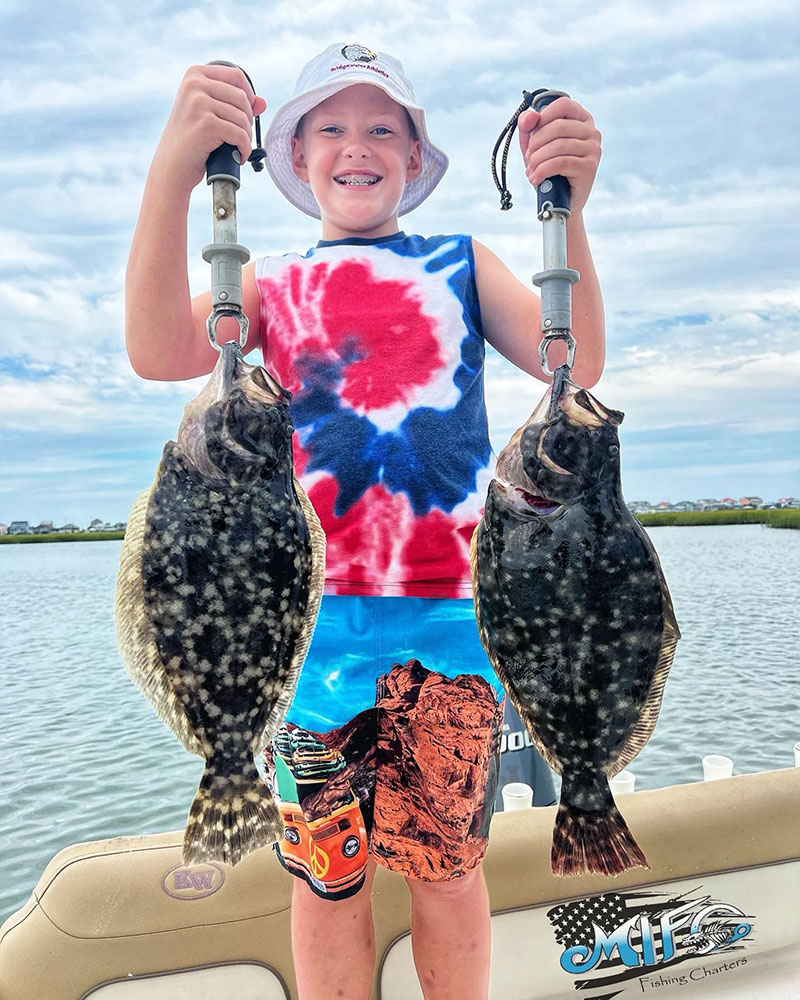 Murrells Inlet is a hotspot for June flounder
Murrells Inlet is a hotspot for June flounder
June brings higher water temperatures and a flood of baitfish from offshore into Murrells Inlet, creating a flounder hotspot that is a mecca for anglers from near and far.
For Capt. Jason Burton of Murrells Inlet Fishing Charters (843-798-9100), June means bigger flounder, more flounder, and hungrier flounder than he’s seen since the fall.
“It’s not just that the weather has warmed up. It’s that the warm weather is stable. We can get a string of warm days in May, even April, but cold fronts still happen in those months. So the flounder get active, then the cold front shuts them down. By June, the cold fronts are gone and the flounder are biting in full force,” he said.
Burton said the inlet holds a number of flounder even throughout winter. But in June, they are joined by plenty more flounder, including some giants, that move in from their offshore wintering grounds. An abundance of big baitfish also moves in, creating a buffet that keeps these fish much more active than they’ve been in months.
“They move around a lot more this month. So you can catch them in more places,” he said.
When it comes to finding flounder holes, Burton said anglers don’t have to look far. This inlet is filled with everything flounder love.
Look for changes
“Any change at all is a prime target for flounder. If there’s even a slight jut in the grass, a small change in the shape of an oyster bed, a grass line meeting an oyster bed, a little change in depth, these are all areas that create breaks in current. Flounder use these spots as ambush points for baitfish,” he said.
While many anglers use the tried-and-true Carolina rig when flounder fishing, Burton said it’s much better to use a stand-up jighead. These keep the point of the hook away from oysters and other structure. So anglers experience fewer hangups and higher hook-up ratios.
Depending on the water depth, the strength of the current, and the wind, Burton uses jigheads that range from 1/4-ounce to 3/4-ounce.
“The lightest that you can get away with is best. You don’t want it getting blown around by the current, but you do want the current to be able to carry it gently,” he said.
This allows anglers to feel the bottom as the jighead moves along, making it easy to detect a bite.
Burton prefers to fish the smaller creeks of the inlet on the lower end of the tide cycle. Once the incoming tide turns to high tide, he moves out to the jetties.
He said when an angler catches a flounder, they should concentrate on that same area.
“Whatever attracted that flounder will definitely attract more. I don’t think they are really schooling, but where one flounder is, other flounder will be there too,” he said.
One of the most popular baits for flounder is the old reliable mud minnow. But by this month, mullet and menhaden have shown up. They are bigger and easier for flounder to see. So that’s what you’ll find on Burton’s hook.




Be the first to comment